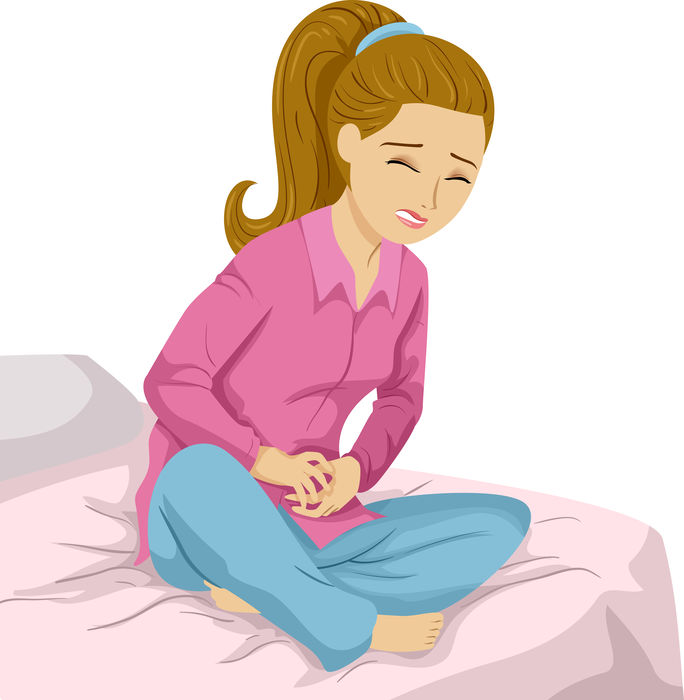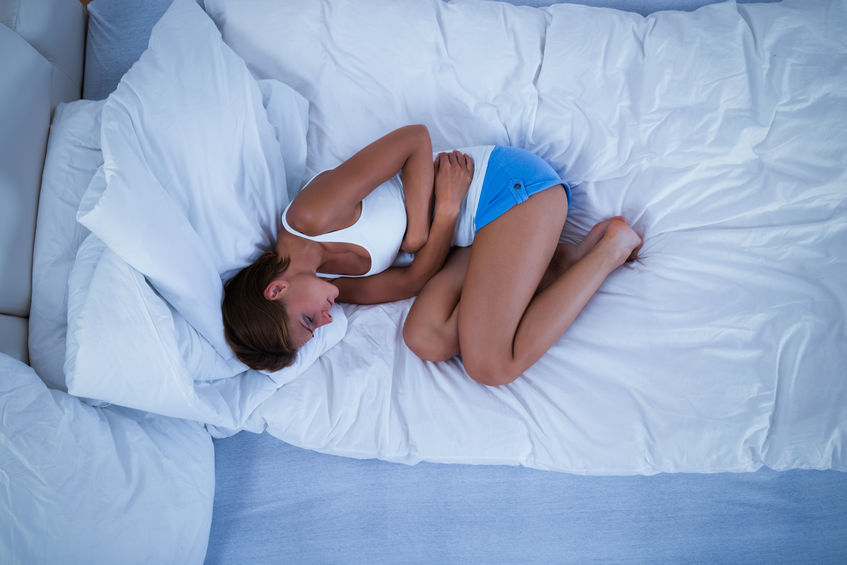Talking to your teenager daughter about her first period is an important subject and a right of passage for many mothers and daughters. The ‘talk’ can often be awkward for mothers and embarrassing for daughters. Many mothers have difficulty finding the right words to help their daughters along.
We offer a short guide below to help you speak to your teenage daughter.
Start by explaining what a menstrual cycle is in easy terms. Using simple terms is the best way to allow a child feel comfortable. There are many books out there that can help relay this information in an easy to absorb manner. Then the next topic that needs to be discussed is PMS since it goes hand-in-hand with menstruation.
Many teenage girls have questions about their menstrual cycle and PMS. We list some of the most common questions that they have.
We hope you find this guide useful.
Why Does A Period Happen?
A period happens once a month because of a process called ovulation (one of the ovaries releases an egg) and hormonal changes in the body. Hormones are chemical messengers. The ovaries release two types of female hormones: estrogen and progesterone that make the lining of the uterine wall build up. If ovulation takes place and the egg is not fertilized, the lining of the uterine wall sheds through the vagina and bleeds. Then the same process happens all over again.
Most teenage girls get their first period, on average, when they’re about 12. But many get it any time between age 10 and 15. Every girl’s body is different and has its own schedule.
Nothing is set in stone but most of the time, a girl gets her period about two years after her breasts start to develop.
For the most part, for the first few years after a girl starts her period, it may not come regularly at all. The body is still adjusting and this is considered normal in the first year. By the second and third years after her first period, a girl’s cycle should start to regularize and be occurring once every 4–5 weeks.
What Is PMS?

Premenstrual Syndrome (PMS) affects a lot of teenage girls. PMS occurs when a girl experiences a monthly pattern of emotional and physical symptoms that happen mostly one to two weeks before her period but that can also happen during it. The symptoms usually go away after the first few days of a period but some girls may suffer with them for around six days up to two weeks. Symptoms may change over time.
Scientists are not sure what causes PMS but it seems that it is to do with a hormonal imbalance in the second half of the menstrual cycle.
What Are The Most Common Symptoms?
More than 200 different symptoms have been associated with PMS. They vary from person to person in frequency and intensity. Some girls also experience a more severe form of PMS called Premenstrual Dysphoric Disorder (PMDD). Girls with PMDD experience at least five of these symptoms and inhibit day-to-day activities.
Common symptoms may include:
- Anxiety
- Stress
- Abdominal cramps
- Digestive issues
- Irritability/Moodiness
- Headaches
- Tiredness
- Sadness
- Bloating/water retention
- Acne
- Diarrhea/constipation
- Flatulence
- Difficulty sleeping
- Swelling, pain or tenderness in the breasts
- Lower back pain
- Joint or muscle pain
- Food cravings
- Weight gain
- Poor concentration
The exact symptoms and their intensity vary significantly from girl to girl, and even somewhat from cycle to cycle. Most girls who suffer with PMS experience only a few of the possible symptoms and usually in a relatively predictable pattern.
Stress and emotional problems, such as depression, seem to worsen the intensity of PMS. Vitamin and mineral deficiencies, high sodium (salt) intake, alcohol, and/or caffeine abuse can make some of the symptoms worse such as water retention and bloating.
A number of medical conditions such as anemia, eating disorders and substance abuse may also make PMS worse.
To qualify as PMS, symptom intensity must increase in the six days before menstruation and must occur at least in two consecutive cycles.
How Can You Treat PMS Symptoms?
For many teenage girls who have more severe symptoms, PMS is not only a monthly inconvenience but can actually be quite disruptive in all aspects of their lives from being able to interact with friends or family and even attend school.
Most teenagers think that PMS is something to suffer through and that there is not much that can be done about it. This is far from true. There are many ways to treat and cope with PMS.
Many teenage girls are irregular in their menstrual cycle which can exacerbate their PMS symptoms. If this occurs the conventional treatment by doctors is to dispense with a low-dose of oral contraceptive pills. Many moms do not want to go the medical route and rather treat their daughters in a natural way.
Lifestyle Changes
Changing the diet of your daughter might be helpful. She should start by reducing salt intake and caffeine consumption (think soda pop) which can ease mild PMS symptoms. Vitamin and mineral deficiencies may worsen PMS. In those cases Magnesium, Calcium and vitamin D supplementation may be useful. Girls tend not to get enough of these nutrients, especially calcium from their diet. Calcium levels also tend to change throughout their menstrual cycle. Mood stabilizing supplements are also available that are natural and safe for your daughter.
Eating a balanced diet that incorporates more vegetables and fruits will also help. Eating smaller meals and more often will help balance blood-sugar levels that may also ease some of the physical symptoms of PMS.
Reducing stress along with increasing exercise will also help alleviate mild symptoms. However, those with severe symptoms may need other forms of alternative treatment that may require supplementation, relaxation techniques and rest.
Many girls get abdominal cramps. If they get too intense, a few things that might help include:
- Placing a warm heating pad/bottle on the stomach
- Taking an over-the-counter pain killer
- Taking a PMS supplement
Dietary Supplements
Growing research evidence supports the use of natural mood stabilizers or dietary supplements especially ones that contain vitamin B6, chasteberry, St. John’s wort, vitamin E, saffron and evening primrose oil.
Vitamin B6 – Vitamin B6 supplements may help the body produce the ‘happy hormones’ also known as endorphins that may help with many of the psychological symptoms of PMS, such as moodiness, irritability, and anxiety.
Chasteberry – also known as agnus castus – supplements are the most common for female reproductive health and has been widely researched and tested in clinical trials. Chasteberry has been found to help a lot of girls with not only with PMS (especially with physical symptoms, such as bloating, breast pain/tenderness, and headaches) but also keeping periods regular and reducing acne.
St. John’s Wort – also known as Hypericum perforatum L – is a medicinal herb that’s often used to treat mild to moderate depression. There are some studies that suggest it’s effective for treating PMS symptoms like depression and anxiety, as well as food cravings.
Vitamin E – vitamin E and essential fatty acids may help reduce symptoms of premenstrual syndrome.
Saffron – also known as Crocus sativus L. – contains antioxidants and more than 50% of the USDA’s recommended daily allowance of vitamin C, iron and magnesium. It has been found to improve depression and boost mood during PMS.
Ginkgo biloba – is well known for known for improving memory but it has also been found to help reduce the intensity of both physical and psychological PMS symptoms.
Primrose Oil – is a good source of essential fatty acid gamma-linolenic acid, valued for its anti-inflammatory properties and that has been found to reduce PMS symptoms such as breast pain, mood swings and acne.
Since PMS is a chronic situation, special attention should be paid to the side effects of pharmacological interventions such as birth control pills (even in lower dosage for teens). Herbal medicine is a recent favorable therapeutic approach owing to fewer side effects. Side effects of mood stabilizers are minimal or non-existent since they are natural herbs but in any case, we recommend that you talk to your family doctor or pediatrician before allowing your daughter to take any type of supplements or over-the-counter medication. Picking the best mood stabilizers for your daughter is not easy. There are many options available, some better than others. Make sure that you pick a supplement that only uses high quality ingredients sourced from premium raw key materials that are tested and follow quality standards set by the industry. You don’t want to take a chance with flimsy mood enhancing herbs that may be contaminated or tainted in any way.
Natural Mood Stabilizers For PMS
The use of mood enhancing supplements is one way that some of the physical PMS symptoms can be managed. Coping with the emotional symptoms of PMS may be daunting for your teenage daughter. Keeping a mood journal where she can write down her feelings may help her deal with them. Talking with other teenagers or female relatives may help her understand her own feelings. As a mother, being there for your daughter is the best thing you can do.

